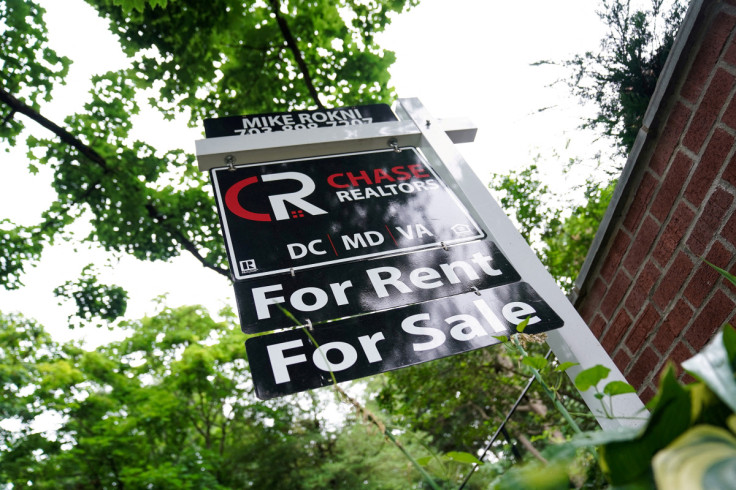Fed Looks To Services Prices As Last Leg In Inflation Fight

U.S. consumers flush with the COVID pandemic aid payments that flowed from the government in 2020 and 2021 flocked to auto lots and drove vehicle prices to sky-high levels.
The repair bills followed, and even as inflation moderates for autos themselves the rising cost of auto maintenance - up about 13% over the last year - is one of the dozens of services that helped keep overall U.S. prices rising far faster than the Federal Reserve is willing to tolerate.
As the U.S. central bank plots its next moves in the battle against inflation, the behavior of businesses in the services sector - from hair salons to airlines, restaurants and financial planners - will play a large role in determining whether the Fed succeeds in slowing inflation without interest rate hikes so aggressive they trigger a recession.
Prices in that sector are now "really kind of the wild card ... While there's a general understanding that we think inflation will be going down, it still is difficult ... to quantify exactly what those magnitudes are going to be," Robert Rich, a senior economic and policy advisor at the Cleveland Fed and director of its Center for Inflation Research, said at an event on Monday.
The U.S. Labor Department is due to release its Consumer Price Index report for January at 8:30 a.m. EST (1330 GMT). Economists polled by Reuters expect the pace of price increases slowed to an annual rate of around 6.2%, compared to 6.5% in December and a recent peak of around 9% in June.
Even though that headline rate remains high, Fed officials will arguably be paying even more attention to the granular details around what is contributing most to any drop - and more importantly to what is not.
At this point, between improving supply chains and changes in consumer behavior from the outset of the pandemic, the Fed feels it has won the battle when it comes to most goods: On average, outside of food and energy products that are driven by global commodity costs, prices of products have been falling recently and detracting from overall inflation.
It is now the broad array of services, which account for about two-thirds of consumer spending, that is keeping inflation elevated and may present the Fed with a slow-moving endgame in defending its 2% inflation target.
At a Feb. 1 news conference following the end of the central bank's latest policy meeting, Fed Chair Jerome Powell noted his concern that "disinflation" had yet to take hold in much of the services sector.
"So far, we don't see that. And I think until we do, we see ourselves as having a lot of work left to do," in raising interest rates and restricting credit as much as needed to ensure inflation falls broadly and sustainably, Powell said.
'CLEAR SIGNS OF DISINFLATION'
The news, however, isn't all bad.
For the purpose of calculating inflation, "housing" is considered a service. Whether in the case of rent or an equivalent calculated for homeowners, Fed officials are confident inflation for "shelter" is about to slow as home price appreciation ebbs and falling rents for newly leased apartments or houses work their way into annual averages.
Even outside of housing, the general pace of services inflation has been falling somewhat.
The less rosy news: It isn't clear how fast or how much further it will decline, leaving the Fed in a waiting game to see if services-sector inflation falls on a timeline that makes policymakers comfortable they will make steady progress back to the 2% inflation goal.
Personal consumption expenditures data as of December show that services outside of energy and housing were contributing about 1.9 percentage points on an annualized basis to headline PCE inflation, nearly consuming all of the Fed's target inflation rate even if all other prices were steady. While that is down from nearly 3 percentage points in August, it represented an increase over the prior month.
Omair Sharif, president of Inflation Insights, said he felt inflation would continue to slow in the industries where Powell has thrown the focus, with prices cooling in particular for things like air travel and health services."There are some clear signs of disinflation," said Sharif, who estimated that much of the run-up in services inflation early in 2022 came from transportation prices, notably airfares, something he attributed to post-pandemic "reopening pressure" that is now waning.
By Sharif's estimation, consumer prices for "core" services excluding energy and housing over the last six months rose at a 3.8% annual rate, only about half a percentage point higher than right before the pandemic.
Still, the pace was "high and needs to come down," Seth Carpenter, chief global economist at Morgan Stanley, said in a note.
Carpenter said he felt that one of Powell's top stated concerns, of low unemployment driving wages higher for workers in the services sector and keeping inflation elevated, may be overstated.
But that doesn't mean the Fed can rest easy.
"The link from wages to inflation is there, but small, and both services wage and price inflation are trending down," he said, noting a recent White House study indicating wage growth across key services businesses was declining. "But it will not be a smooth decline."

© Copyright Thomson Reuters 2024. All rights reserved.





















